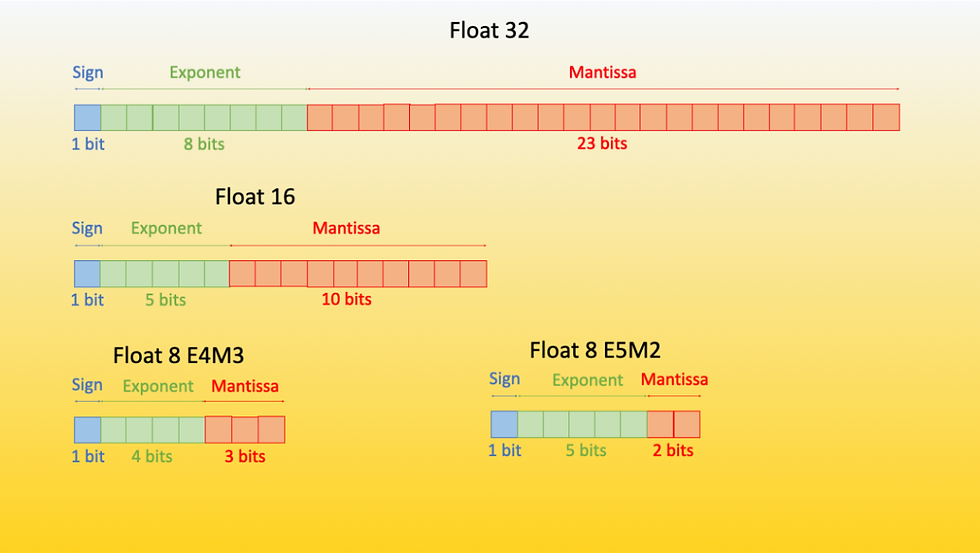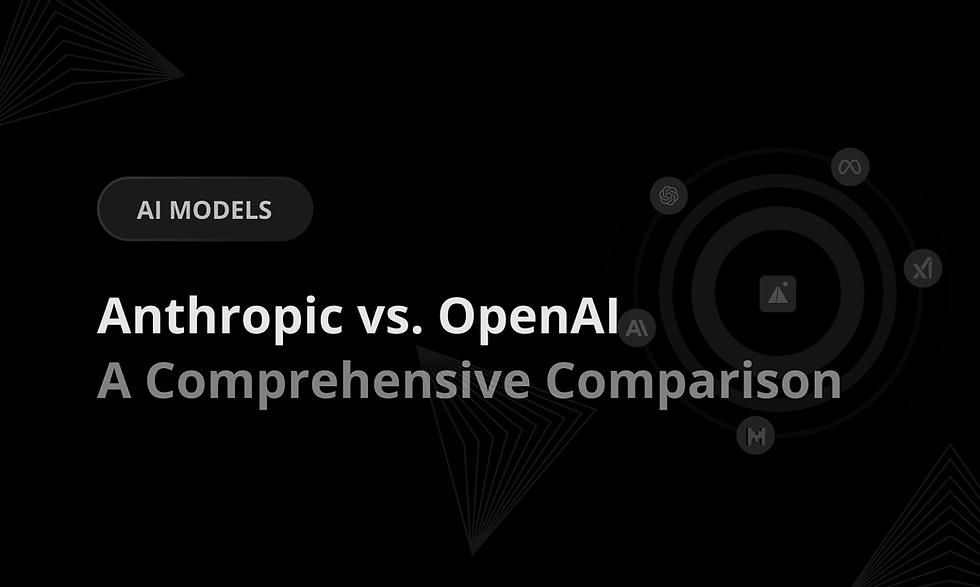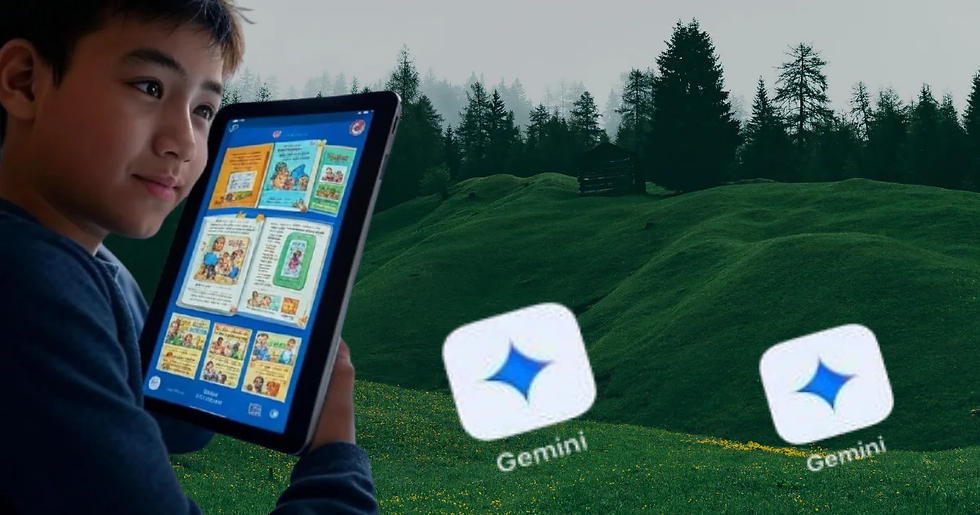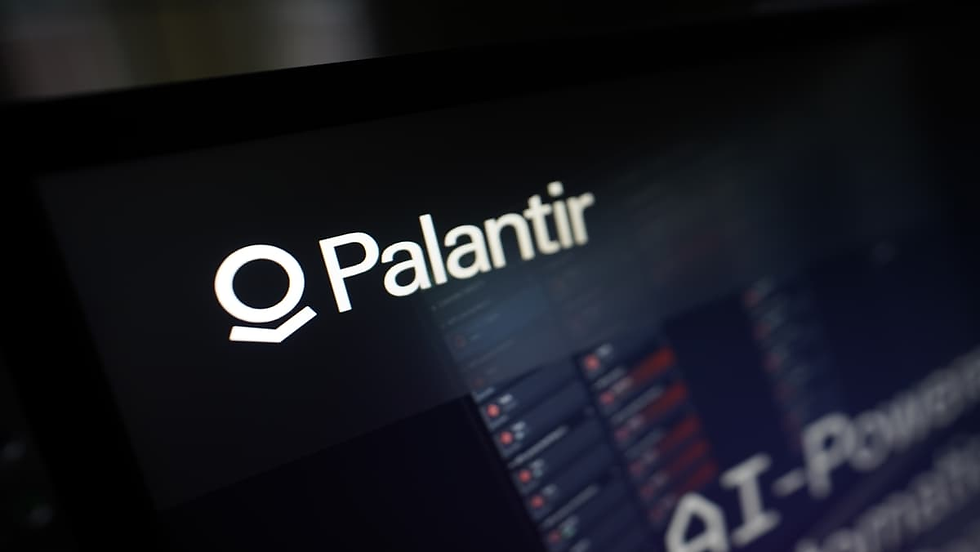Everything You Need to Know About GPT-OSS in 2025
- Ethan Carter

- Aug 7
- 11 min read
Updated: Aug 11

You can now use GPT-OSS. It is OpenAI’s new open-source large language model. This model gives you open-weight access. You get full control over how you use and change it. The model uses an Apache-2.0 license. This lets you use it for business without paying fees. You do not get stuck with one company. You get strong reasoning and agentic skills. This makes GPT-OSS great for safe and private AI tools. OpenAI’s gpt oss models help more people use ai. They let you create new things in many fields.
Key Takeaways
GPT-OSS is an open-source AI model. You can use it on your own devices. This gives you full control over your data and costs. You do not need cloud services to use it.
The model uses a special design called Mixture-of-Experts. This helps it work fast and smart. It also saves computer resources. This makes it good for coding, math, and research tasks.
You can choose how deeply GPT-OSS thinks. You can see its reasoning steps. You can fine-tune it with your own data. This helps it fit your needs.
GPT-OSS can handle very long texts. You can work with big documents or long chats. You will not lose track of information.
The Apache 2.0 license lets you use GPT-OSS freely. You can change and share it too. This helps you build private, safe, and flexible AI tools. You can use them for business or personal projects.
What Is GPT-OSS?

Overview
GPT-OSS is OpenAI’s most advanced open-source model family. It is special because you get full access to its weights. This is not common in older GPT releases. You do not have to use cloud services or APIs. You can run GPT-OSS on your own laptop or server. This gives you control over your data and costs.
OpenAI made GPT-OSS for developers, researchers, and businesses. You can use it for work, study, or personal projects. You do not have to pay license fees. The Apache 2.0 license lets you use the model anywhere. You can use it even in places with strict privacy rules. You can fine-tune the model with your own data. This helps you make custom solutions for your needs.
GPT-OSS comes in two sizes. The smaller 20-billion parameter model works on a laptop. The bigger 120-billion parameter model is as smart as top paid models. Both models let you analyze data on your own device. You do not have to send data to the cloud. This gives you more control and privacy.
Note: GPT-OSS only works with text. It cannot process images or video. But it can browse the web, run code, and use software tools.
Unique Aspects
GPT-OSS has special features that make it different from other open-source large language models. You get a modular, multi-agent system. Special AI agents do tasks like research, summarizing, and translating. A main coordinator manages these agents. This makes the system strong and flexible. You can use the model for many tasks.
The Mixture-of-Experts (MoE) transformer architecture is a big benefit. Only some parameters are used for each token. This saves resources and makes the model faster. The model can handle long context windows—up to 131,072 tokens. It uses rotary position embeddings and sliding window optimization. You can work with long documents or chats without losing track.
GPT-OSS uses advanced quantization methods like MXFP4 4-bit quantization. This cuts memory use by up to 90% but keeps performance high. You can run the 120-billion parameter model from a USB stick. This makes it easy and cheap to use.
You can see how GPT-OSS compares to other models in this table:
Feature / Model Aspect | GPT-OSS-120b | GLM-4.5 | Qwen3 Thinking | DeepSeek R1 | Kimi K2 |
Total Parameters | 116.8 billion | Larger than GPT-OSS-120b | Larger than GPT-OSS-120b | Higher parameter count | Smaller specialized model |
Active Parameters per Token | ~5.1 billion (MoE design) | Full parameter usage | Full parameter usage | High parameter usage | N/A |
Architecture Highlights | Mixture-of-Experts (MoE) | Dense model | Dense model | Dense model | Dense model |
Residual Stream Dimension | 2880 | N/A | N/A | N/A | N/A |
Attention Mechanism | Grouped Query Attention (64 query heads, 8 key-value heads) | N/A | N/A | N/A | N/A |
Position Embeddings | Rotary position embeddings | N/A | N/A | N/A | N/A |
Context Length | 131,072 tokens (using YaRN) | Up to 20k tokens (DeepSeek R1) | N/A | Up to 20k tokens | N/A |
Quantization | MXFP4 quantization for MoE weights | N/A | N/A | N/A | N/A |
Variable Reasoning Effort | Yes (low, medium, high CoT length) | N/A | N/A | N/A | N/A |
Agentic Workflow Support | Browsing tool, Python tool, custom developer functions | N/A | N/A | N/A | N/A |
MMLU-Pro Benchmark Score | 90.0% | 84.6% | 84.4% | 85.0% | 81.1% |
AIME 2024 Score | 96.6% (with tools) | Lower than GPT-OSS | Lower than GPT-OSS | Lower than GPT-OSS | N/A |
AIME 2025 Score | 97.9% (with tools) | Lower than GPT-OSS | Lower than GPT-OSS | Lower than GPT-OSS | N/A |
GPQA PhD-level Science Benchmark | 80.9% (with tools) | 79.1% | 81.1% | 81.0% | N/A |
You can pick the reasoning level in GPT-OSS. Choose low, medium, or high for speed or depth. The model shows its thinking steps before the final answer. This helps you check and fix its process.
You can use GPT-OSS offline. You do not pay API costs or face rate limits. You do not need the internet. Your data stays private and safe. The Apache 2.0 license lets you use the model for anything, even business. You can fine-tune the model with your own data, even if it is private.
Here are some key benefits of GPT-OSS:
Change and fine-tune the model for your needs.
Use agentic workflows like browsing and running code.
Get full control and see how the model reasons.
GPT-OSS starts a new era for open-source model families. You get a chatgpt-level model that is as good as top paid systems. You can use it for research, business, or personal projects. OpenAI’s GPT-OSS helps you build smart AI tools while keeping control and privacy.
Key Features

Mixture-of-Experts Architecture
The Mixture-of-Experts (MoE) architecture makes gpt-oss strong. Instead of normal layers, it uses MoE layers. Each MoE layer has many experts. The 120B model has 128 experts. The 20B model has 32 experts. Each expert is a small SwiGLU MLP with a gate. A router learns which experts to use for each token. It picks the best four experts for every token. The token goes to those experts. The model mixes their answers using weights.
You find MoE layers in every transformer block. These come after the self-attention part. There are 36 or 24 Pre-LN Transformer layers, based on model size. Each layer uses special connections and RMS LayerNorm for balance. This setup gives more power but stays efficient. Only a few experts work for each token. This saves memory and computer power.
MoE layers help the model do many tasks well.
You get faster answers and use less resources.
You can pick how deep the model reasons.
The model lets you use tools like browsing and running code.
With gpt oss, you match top models like o3 and o4-mini. You can solve hard problems and agentic tasks easily.
4-bit Quantization

Gpt-oss uses 4-bit quantization (MXFP4) to save memory. This cuts memory use by about 75% compared to 16-bit models. The 120B model fits on an 80GB GPU like NVIDIA A100 or H100. The 20B model runs on GPUs with just 16GB VRAM. You can even use good laptops or phones for smaller models.
4-bit quantization lets big models run on simple hardware.
You get fast answers and use less memory.
The model stays accurate, even with fewer bits.
You can use gpt-oss on your own devices for privacy and saving money.
The quantization works well with MoE weights. This makes the model easy and quick to use. You do not need supercomputers or big clusters. You can use advanced models on your own.
Large Context Window

Gpt-oss can handle long documents and chats with its big context window. The model supports up to 128,000 tokens. This is as much as GPT-4o and DeepSeek R1. You can work with science papers, manuals, or long chats without losing track.
Model / Feature | Maximum Context Window | Notes on Architecture and Usage |
GPT-OSS (Open-Weight Models) | Uses dense and sparse attention, Rotary Positional Embeddings (RoPE), and Grouped-Query Attention (GQA). Runs well on 16-80GB VRAM. | |
OpenAI GPT-4o | 128,000 tokens (128k) | Also has a large context window, good for long documents and code. |
DeepSeek R1 & V3 | 128,000 tokens (128k) | Uses Mixture-of-Experts, great for chain-of-thought and multi-step tasks. |
Mistral Medium 3 | 128,000 tokens (128k) | High performance, works for hybrid and on-premises use. |
Anthropic Claude 4 & related | 200,000 tokens (200k) | Medium context window, good for multi-step work and research. |
OpenAI GPT-4.1, Google Gemini 2.5 Flash & Pro, Meta Llama 4 Maverick | 1,000,000 tokens (1M) | Very long context windows for hard tasks. |
Magic.dev LTM-2-Mini | 100,000,000 tokens (100M) | Huge context window for big code or document sets. |
Meta Llama 4 Scout | 10,000,000 tokens (10M) | Very long context for on-device work and book summaries. |
A big context window means you can process more data at once. You do not need outside systems to get information. This helps you keep track in long tasks. You can use gpt oss for research, law, or tech support when you need to follow long info chains.
You get better results in real tasks, like book summaries or code checks.
The model can think over long documents without forgetting.
You need fewer extra tools, so your work is easier.
Open-Weight Release, Apache 2.0 License, and Privacy/Security Benefits
You have full control with gpt-oss’s open-weight release. The Apache 2.0 license lets you use, change, and share the model for free, even for business. You do not face patent or copyleft problems. You can run the model on your own hardware, so your data stays safe. You do not need to send info to outside servers.
You avoid being stuck with one company and keep your data safe.
The model has safety features and passed outside safety checks.
You can see how the model thinks, which helps you trust and fix its answers.
Open-source models like gpt oss give you more choices and control. You can check the code, change the model, and make it safer. You run your own systems, so you decide how to protect your data.
Tip: Running gpt-oss on your own computer keeps your private data safe and away from others.
Open-Source LLMs Comparison
GPT-OSS vs Other Open-Source Models
If you look at gpt-oss and other open-source llms, you will see some clear strengths and a few limits. The gpt oss 120B model is the smartest American open weights model. It does better than most American open-source models, like o3-mini and o4-mini, in reasoning and STEM tests. You get good results in math, coding, and using tools. But gpt-oss is not as strong as top Chinese open-source models, such as DeepSeek R1 or Qwen3 235B, when you look at all-around performance.
Gpt-oss models are best for tasks that need logic and problem-solving. The model uses a Mixture-of-Experts design. This means only a few experts work for each token. That makes the model powerful and efficient for coding, math, and science. You can run the 20B model on a laptop with 16GB RAM. This makes it easy to use at home or work. The Apache 2.0 license lets you use, change, and share the model for your own projects.
Tip: You can set the reasoning level in gpt oss. This helps you pick between speed and depth for your project.
Performance Benchmarks
Gpt-oss models do well on many tests. The 120B model almost matches o4-mini on hard reasoning tasks. The 20B model is as good as o3-mini and works on smaller devices. Both models are great at math, coding, and general knowledge. They can answer PhD-level science questions and use tools like web browsing and Python code.
Here is a quick comparison:
GPT-OSS-120B does better than most American open-source models in reasoning and STEM tasks.
The model does not do as well in creative writing and multilingual reasoning as some others.
Compliance tests show strong guardrails, which can change some answers.
You can run the model on your own computer, so your data stays private and safe.
The model works with tools and APIs for advanced ai workflows.
Gpt-oss gives you lots of options. You can run it on your own hardware, change its settings, and use it for many ai jobs. This makes gpt oss a good pick for developers who want control, privacy, and strong performance.
Using GPT-OSS

Deployment Options
You can set up gpt oss in different places. The model works in the cloud, on your own computers, or at the edge. Here is a simple table:
Deployment Environment | gpt-oss-120b | gpt-oss-20b |
Cloud | Azure AI Foundry, AWS SageMaker, serverless endpoints | |
On-Premises | Enterprise GPUs (NVIDIA H100) | Local workstations (GeForce RTX, RTX PRO) |
Edge | Not available | Windows devices (16GB+ VRAM), soon macOS |
You can use cloud services like Azure or AWS. These give you api access and fast GPUs. If you want, you can run the model on your own big GPUs or work computers. For edge use, the 20B model works on Windows with strong GPUs. You can mix cloud, on-premises, and edge for more privacy and speed.
Tip: Export the model to ONNX or Triton for Kubernetes or edge use. This helps you change your setup when you need to.
Fine-Tuning
You can train gpt oss with your own data. The model lets you change it to fit your needs. Both the 120B and 20B models work for fine-tuning. You can use home GPUs or cloud GPUs for this. Many people use PyTorch FSDP or DeepSpeed to help with memory and speed.
Model | Fine-tuning Approach | Hardware Needed | Use Case |
gpt oss | PyTorch FSDP, DeepSpeed | 8×A100 GPUs or 16GB+ VRAM | Custom chatbots, domain tasks |
Vicuna-13B | PyTorch FSDP | 8×A100 GPUs | Multi-turn chat |
GPT-NeoX | Megatron, DeepSpeed | Multi-GPU | General language tasks |
You can make the model work better for your job, school, or personal projects. Fine-tuning gives you better answers than using a basic api.
Integration
You can connect gpt oss to your apps with different apis. The model works with RESTful api tools like FastAPI or Flask. You can also use vLLM, which is like the OpenAI api. This makes it easy to switch from other models.
Use Redis to handle lots of requests at once.
Add caching to make repeated answers faster.
Use WebSocket to stream answers for live apps.
Spread work across model copies for steady speed.
Note: For big companies, DICloak helps many users share the model and keeps data safe.
You can use the model to make content, check data, and more. The api lets you build safe, flexible, and strong tools for your group.
You can help decide what open-source AI will look like. OpenAI made this model so you and your team can use advanced technology. It is easier to get and change for your needs. You can see how it works and save money. You can also make the model fit what you want. The open way of this model helps people create new things and use it safely. Try using this model for your next project. It can help you and others make AI better.
FAQ
How do you access the API for GPT-OSS?
You can access the API by running the model on your server or using supported cloud platforms. Most developers use RESTful endpoints or vLLM for easy integration with apps.
Can you run GPT-OSS offline?
Yes, you can run GPT-OSS offline on your own hardware. This setup keeps your data private and does not require an internet connection or external API calls.
What hardware do you need for GPT-OSS?
You need a strong GPU for the 120B model, like an NVIDIA H100. The 20B model works on a laptop with 16GB VRAM. You can deploy both models using the API.
Is fine-tuning possible with GPT-OSS?
You can fine-tune GPT-OSS using your own data. Many users choose PyTorch FSDP or DeepSpeed. After fine-tuning, you can serve the model through your API for custom tasks.
Does GPT-OSS support integration with existing apps?
Yes, you can connect GPT-OSS to your apps using the API. Popular frameworks like FastAPI or Flask help you build chatbots, data tools, or research assistants quickly.


